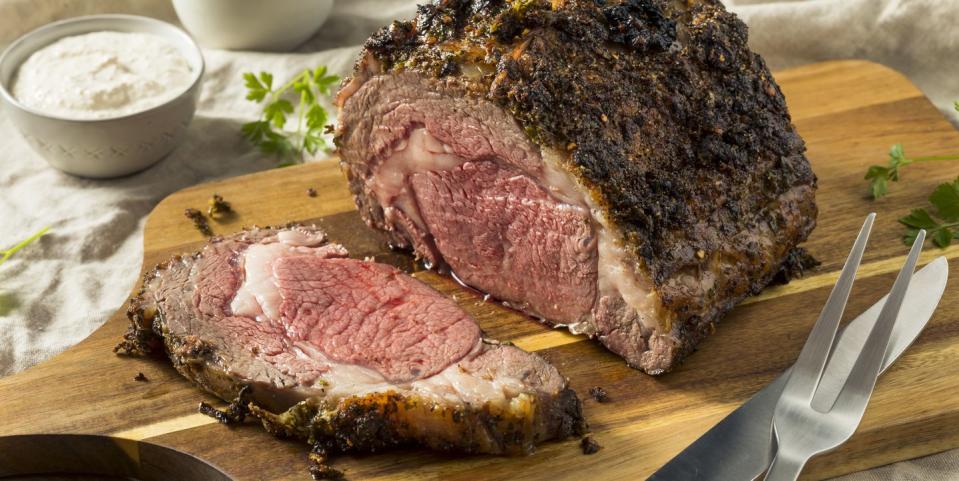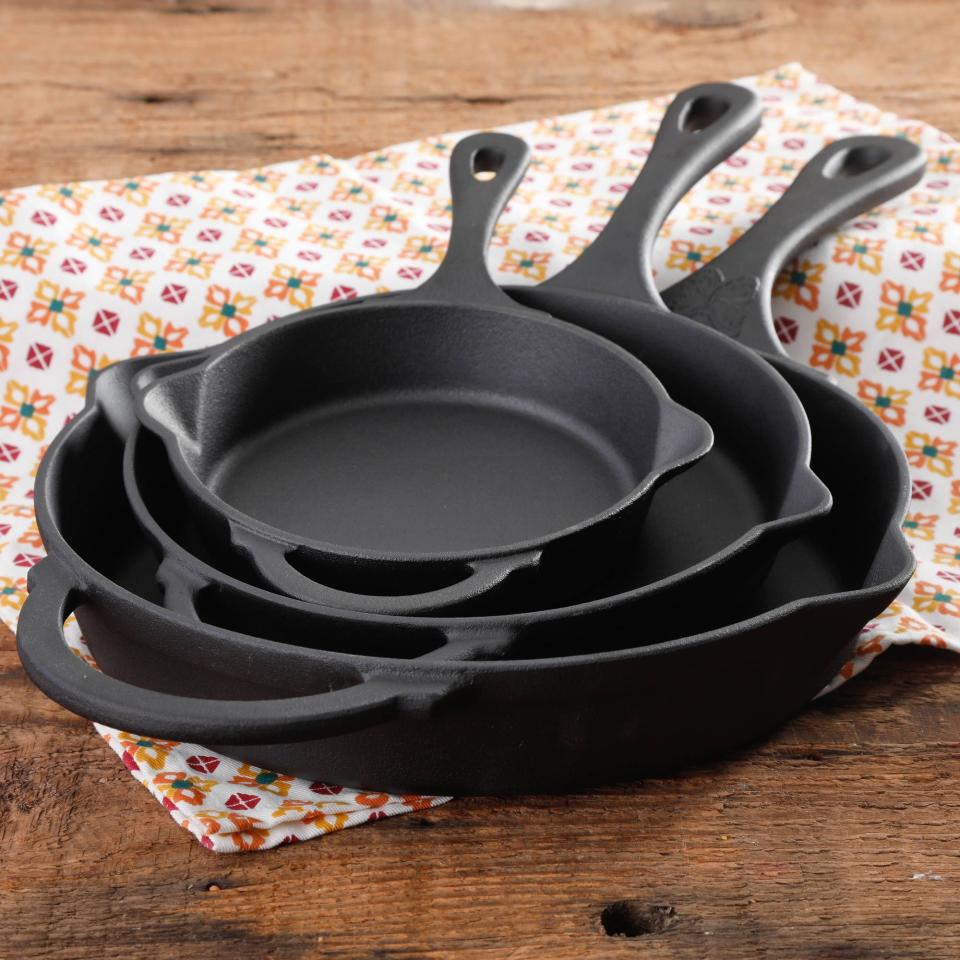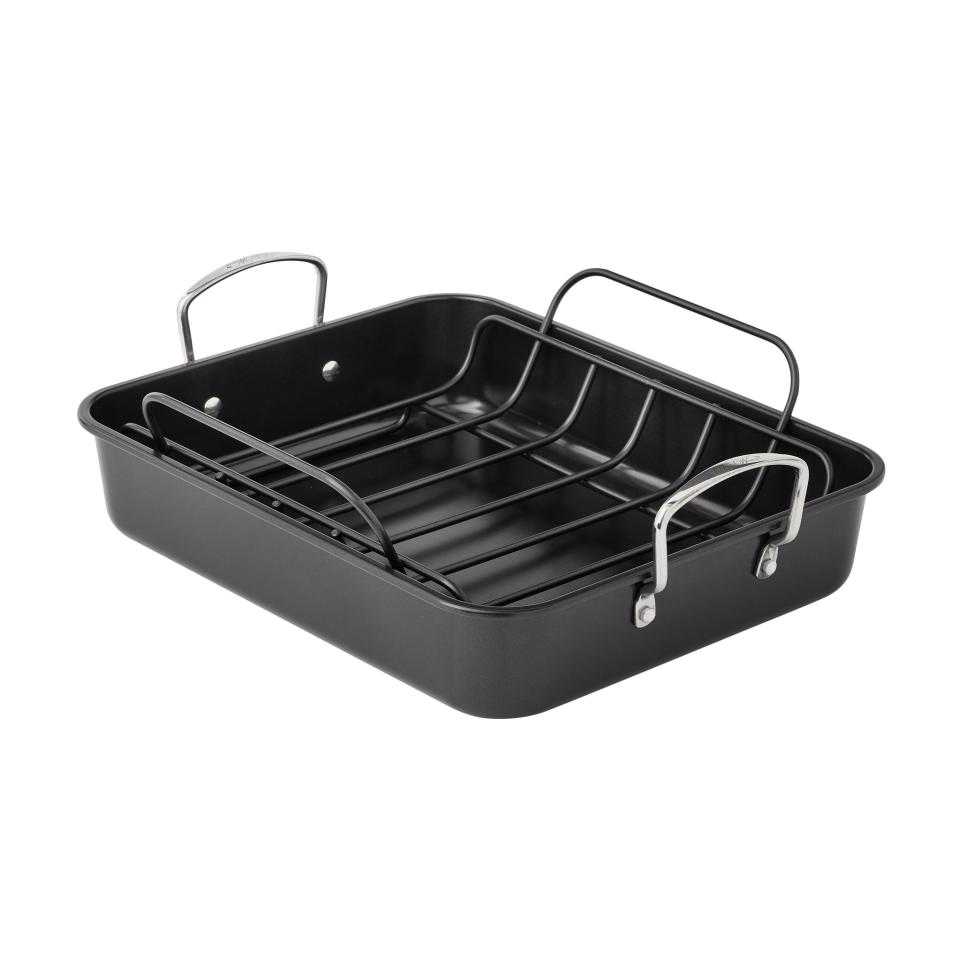Prime Rib vs. Ribeye: What’s the Difference?

"Hearst Magazines and Yahoo may earn commission or revenue on some items through these links."
Fun Fact: Ree Drummond’s very first blog post was "How To Cook A Steak." Her cut of choice? The ribeye. Prime rib roasts and ribeye steaks are among the most treasured, beloved cuts of beef out there (just ask Ladd Drummond!). Both are gloriously rich and tender, and while they can be pricey, you certainly get what you pay for: Just one bite of either cut will tell you all you need to know.
But if you're considering prime rib vs. ribeye for your next family feast or cookout, you're probably wondering what the difference is between the two. Well, it all depends on how many people you're serving, how much time you have, and where you're cooking.
Ribeye steak, for one, is so good that all Ree uses on it is seasoned salt and lemon-pepper seasoning (oh, and butter!). Ree's Prime Rib, meanwhile, is even more of a special occasion recipe—and it's a staple on the holiday table. You can't go wrong with either of these cuts.
Is ribeye the same cut as prime rib?
Though prime rib is typically served in restaurants as a “steak” or a slice of meat, it’s always cooked as part of a larger roast (known as a standing rib roast) before it's sliced into servings. Prime rib is an impressive cut of meat that is easier to make than it looks—though as Ree points out, overcooking this special-occasion cut would be a tragedy of epic proportions, so arm yourself with a meat thermometer or take the steps necessary to babysit this roast until it’s just right.
The ribeye actually comes from a prime rib roast (or standing rib roast) before it’s cooked, so a ribeye is classified as a steak. In a nutshell, prime rib always begins its journey to a lucky plate as a roast; a ribeye always starts out as a steak. Both, however, come from the same cut of beef.

The Pioneer Woman Cast Iron 3-Piece Set
$49.97
walmart.com
WalmartAmerican butchers will break down a cow into eight parts—or primal cuts, in butcher jargon. Both ribeyes and prime rib come from the rib primal cut, which is located toward the forequarter of the cow, high on the back where the muscle doesn’t get much exercise, resulting in the prized fatty marbling.
Ribeye steaks and prime rib (read: standing rib roasts) are what’s known as the sub-primal cuts of a rib primal cut, meaning that they’re secondary cuts of meat after the cow is initially broken down. (Fun fact #2: A “cowboy steak” is a bone-in ribeye with an exposed rib bone.)
Which is better—ribeye or prime rib?
It’s not so much that one cut is better—or worse—than the other, it’s more that they're cooked differently and serve different purposes, even though they’re from the same cut of beef. Ribeye steaks are ideal on the grill or seared on a hot cast-iron pan: They should be cooked quickly over direct heat. Prime rib, on the other hand, is cooked as a roast: It's generally seared to create a crust before being transferred to the oven to finish cooking slowly.

The Pioneer Woman Nonstick Roaster with Wire Rack
$25.46
walmart.com
WalmartPrime rib might be better suited for a holiday table with many mouths to feed and the time and care necessary to cook it right; ribeyes are ready in minutes and are probably better for date night or a small barbecue. Also keep in mind that the flavor of these cuts vary quite a bit based on the cooking method: The slow-roasting of prime rib tends to yield a more tender cut of beef, whereas a seared steak may appeal more to those who prefer a crisp and crackly char.
Which is more expensive—prime rib or ribeye?
Though the final answer to this question will depend on your supermarket or butcher, prime rib tends to be the cut requiring a deeper pocket, if only because the final product typically feeds more than one and may include a rib or upwards of seven. However, as a steak, ribeyes are among the priciest of the lot due to their deliciously winning qualities.
You Might Also Like

